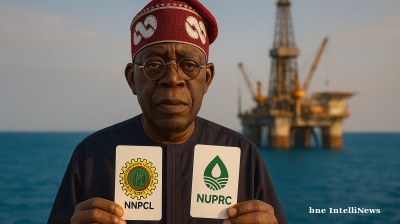Iraqi Prime Minister Mohammed Shia Al-Sudani launched construction of the Krayat Bridge over the River Tigris as part of Baghdad's long-delayed reconstruction campaign.
The project is being executed by Turkish company HSY Yapi Insaat and Lebanon's Khatib & Alami, the Prime Minister's Media Office reported on July 30.
The international partnership project launched on one of the hottest days of the year so far, indicating that despite the weather, Iraq's growing engagement with regional contractors as the country embarks on major infrastructure projects to address decades of neglect and accommodate Baghdad's population of over 9.5mn people.
In previous years, foreign contractors were often pushed out of development projects in the country in favour of those linked with Iranian-backed entities, which had supported previous administrations.

The bridge project marks the first development in the "Fifth Section" military zone, which has been closed for decades and will be transformed into a 400-acre (162-hectare) area hosting public services, cultural and religious centres, and rest cities for pilgrims visiting the holy city of Kadhimiya.
Al-Sudani announced the Fifth Section area as an investment opportunity for all companies through a transparent, non-residential investment process, with plans to build a 12,500-square metre museum documenting Iraq's former dictatorship as a national reminder.
The prime minister confirmed the government's commitment to the "Beautiful Baghdad" initiative phases one and two, representing a unified vision for comprehensive urban renewal that respects Islamic architectural standards whilst accommodating religious tourism.
The Krayat Bridge forms part of Baghdad's second-phase traffic decongestion programme, connecting to major roads including Mohammed Al-Qasim Expressway and Army Canal, addressing critical infrastructure needs in the capital.
The broader Kadhimiya reconstruction campaign includes upgrading 15 major roads across five districts, building 38 new schools, restoring four historic schools, paving 12 residential areas and creating six new city entrances.
News
_1758059076.jpg)
Trump brands Colombia a narcotics pariah as cocaine production hits record highs
Colombia has been branded a narcotics pariah by the Trump administration, receiving its first "failing to cooperate" designation since 1997 as record cocaine production and deteriorating US-Colombia relations reach a breaking point.

Fuel prices in Kyrgyzstan rocket as Ukraine steps up drone strikes on Russian refineries
Central Asian country relies on Russia for nine-tenths of its fuel.

El Salvador leads Latin America's democratic decline, global watchdog warns
The latest IDEA report warns El Salvador faces the fastest democratic erosion in Latin America, with security policies under Bukele raising concerns over freedoms, judicial independence, and long-term institutional damage.

Nigerian president advances oil bill placing NNPCL under control of Finance Ministry, upstream regulator
President Bola Tinubu has endorsed a bill that would undermine the "independence" of NNPCL, shifting ownership to the Finance Ministry and handing new powers to upstream regulator NUPRC.




